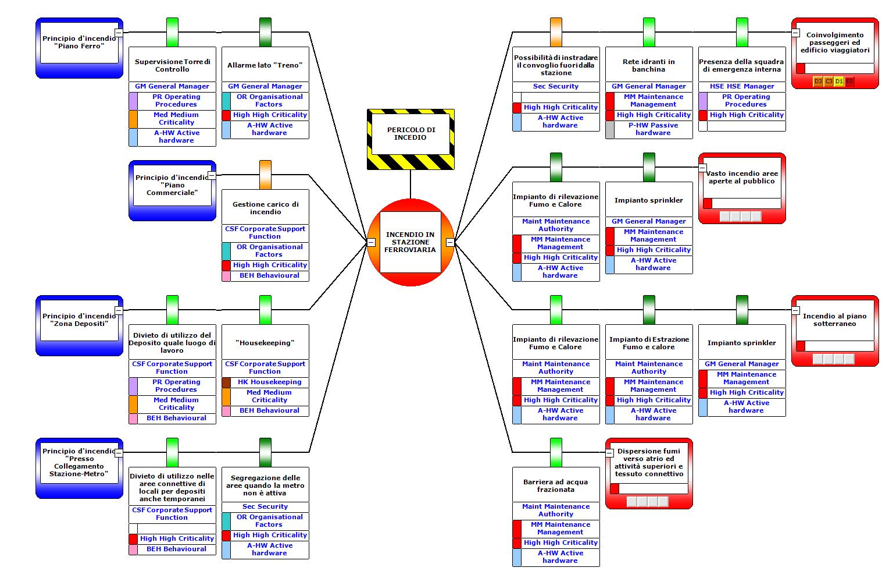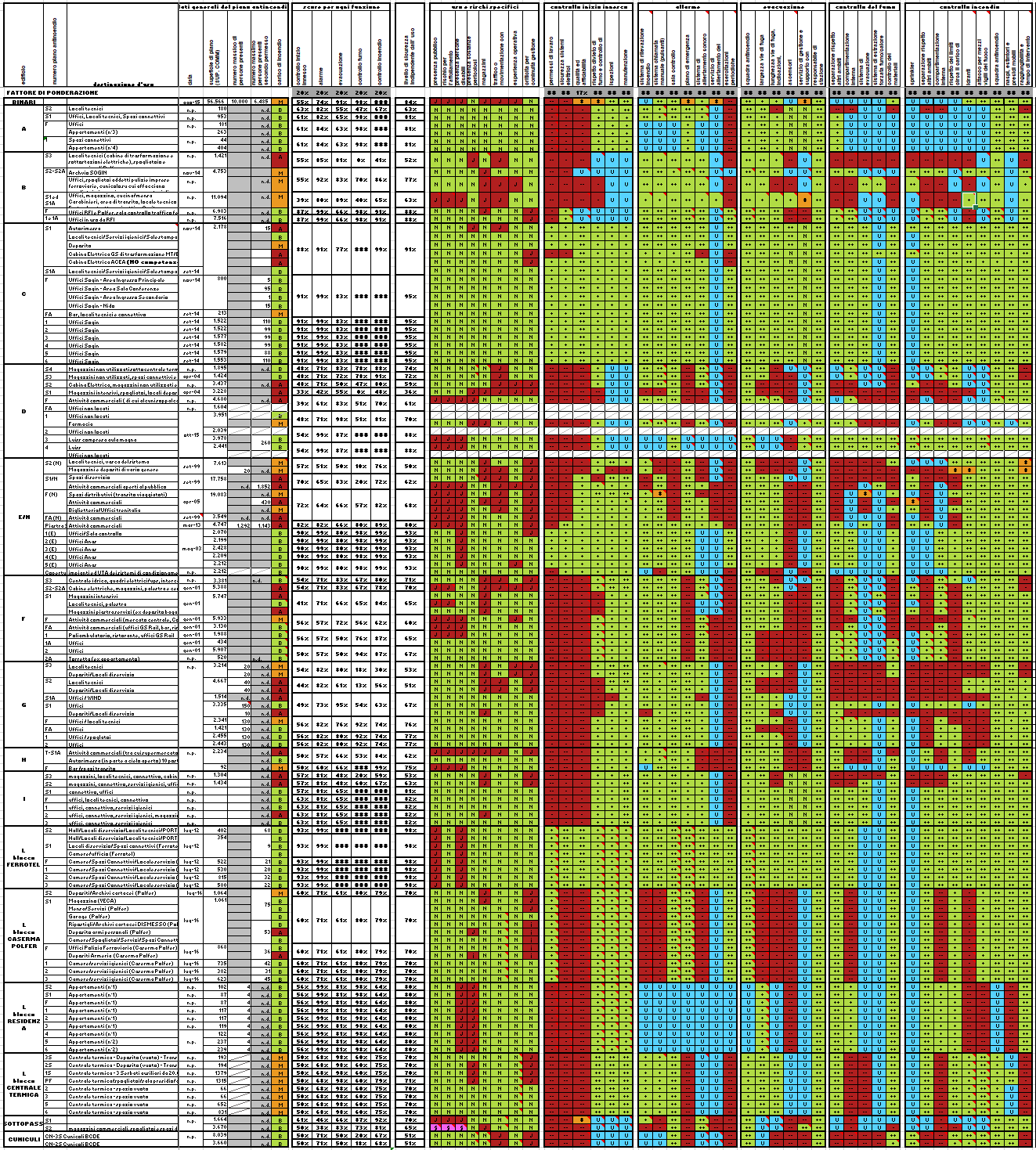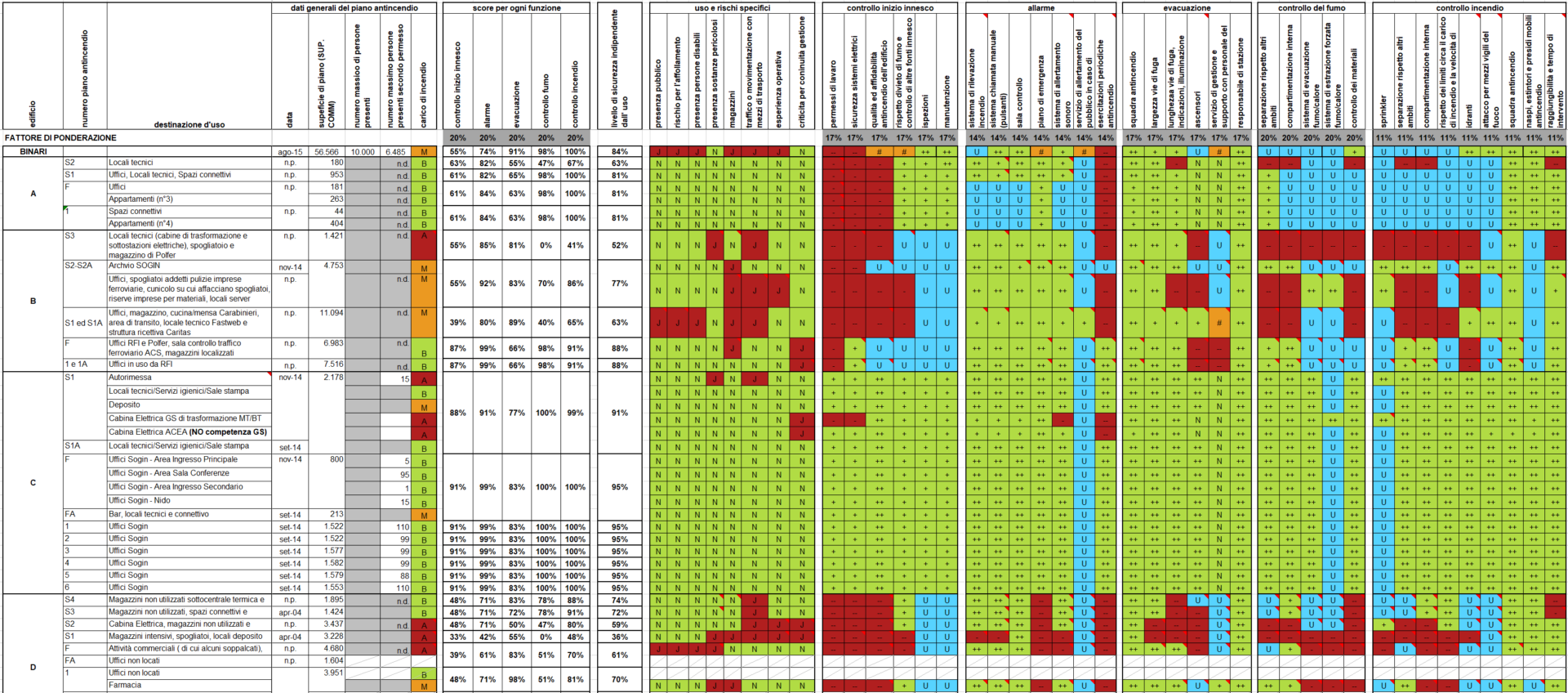The main purpose of the study is to analyse the fire risk of the building complex of a station of national importance.
Railway stations today represent a complex infrastructural reality for a number of easily understandable reasons, including:
- the significant articulation of environments,
- the high degree of crowding and strong heterogeneity of the type of visitors (with significantly low knowledge of the places),
- the presence within these realities of a large number of commercial activities that could suffer a serious element of economic discontinuity in the event of an accidental event,
- the continuous increase in technological and service installations,
- in some cases the necessary ‘retrofitting’ and enhancement of existing spaces (most often also valuable for art and history),
- the need to proceed with specific security adaptations sometimes in competition with the exodus system designed for fire emergencies,
- the need to modify the usability of volumes to constantly improve the “user experience” etc;
for this reason, an initial analysis was carried out by breaking down each building into floors and, if the plan was characterised by the use of spaces according to different uses, to further break down the individual floor.
The decomposition led to the definition of a series of areas to be subjected to the analysis that could be considered representative for fire prevention purposes in relation to homogeneity with respect to the intended use, known criticalities, the owner, the level of safety determined by the pool of specific measures, etc..
The purpose of the process was also, on the basis of the results of the reconnaissance carried out, to define a strategic line, codified in a unitary protocol, for the coherent management of fire safety and fire prevention aspects in all assets, in line with the most modern technical standards of reference and with safety management mechanisms over time.






